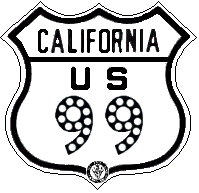 |
US 99/60/70 Photo Gallery:Indio to San Bernardino |
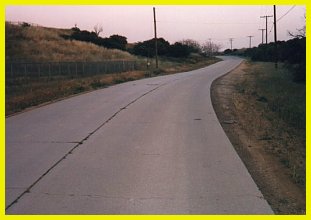 US 99/70 pre-exressway alignment near Yucaipa |
US 99 along with US 60 and US 70 formed an important part of California and the nation's interstate highway system. US 99 was the key farm to market road for goods coming from the fertile Imperial Valley while US 60/70 formed the western leg of two key transcontinental routes. This highway has also been heavily used by vacationers going out to Palm Springs, which prompted a grade separated intersection as early as 1953 between SR-111 and US 99. This section of highway also has a lot of remaining historical sections, making it an interesting one to visit. |
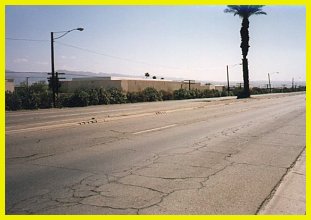 |
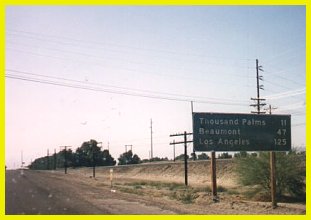 |
| A lot of US 99 remains in Indio. Two examples of this include the four lane alignment and the curb with the divots from the 1953 upgrade as well as a sign that at least predates the I-10 bypass of 1972. Of course, the location of most interest to highway buffs is Clarke's Historic US 99 Museum, which is a part of Clarke's Ultramar gas station, a landmark predating even the paved highway through Indio. | |
 Above:
1925 Whitewater River Bridge |
 Photograph courtesy of the Caltrans Library |
 |
Whitewater Bridges For most of the year, these bridges are and have been an incongrous sight along old US 99 and now I-10 since the Whitewater River is as dry as a bone, making one wonder how it acquired such a name. During the rainy season, however, this dry river bed becomes a raging torrent carrying runoff from the San Bernardino mountains to its ultimate destination in the Salton Sea. Evidence of this is shown in the picture in the upper left, which was taken in early spring. The original bridge, pictured in the upper left photo was completed in 1925 and was a massive feat to build. The piers actually are set 20 feet below ground and are anchored to bedrock below the riverbed. This bridge has survived many floods, especially the massive ones in 1938. Its successor is the two bridges pictured above which were completed in 1953 as a part of the expressway upgrade. It is interesting to note that it has the same basic structure. It was widened in 1967 and is now a part of the eight lane I-10 freeway. |
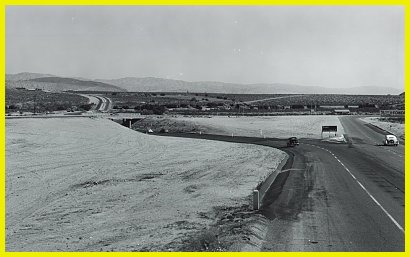 |
US 99/70/60 - SR-111 Interchange (1953) The grade separated
interchange with Route 111 was constructed as part of the expressway improvement. By the
1950s, Palm Springs had already become a famous resort, popularized by many Hollywood
stars. One consequence was that the interchange with Route 111, which is the main turn-off
for Palm Springs, had become very congested, with cars sometimes waiting hours to make the
left turn from Route 111 to head home. This interchange helped to solve the problem. |
| Cabazon While most of the 1952 expressway has been incorporated into modern I-10, several parts still remain. The town of Cabazon was completely bypassed by I-10 in 1964, leaving a very well preserved section of expressway. Unfortunately for the town the fact that it was bypassed appears to have had an adverse effect. |
 |
![]()
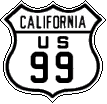 |
Go south to El Centro and the Mexican Border. Continue north to San Bernardino and Los Angeles. Return to the US 99 Page. |
Go to the Historic California US Highways Main Page
![]()
http://www.gbcnet.com/ushighways/US99/99pics_b.html